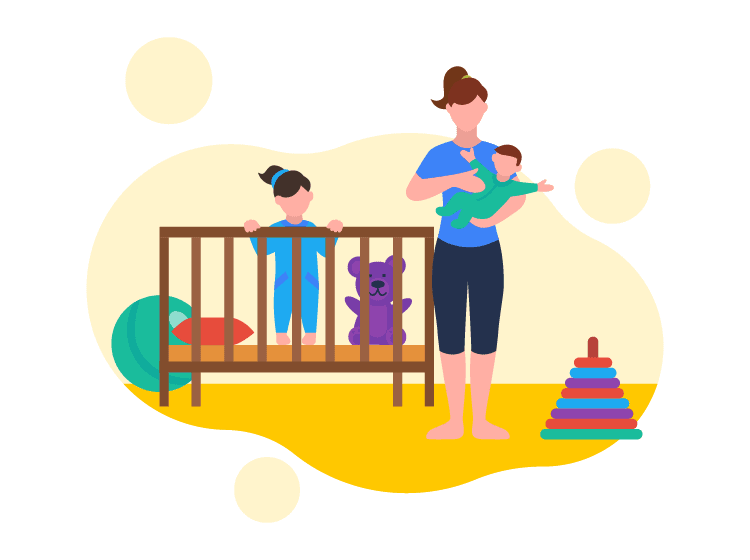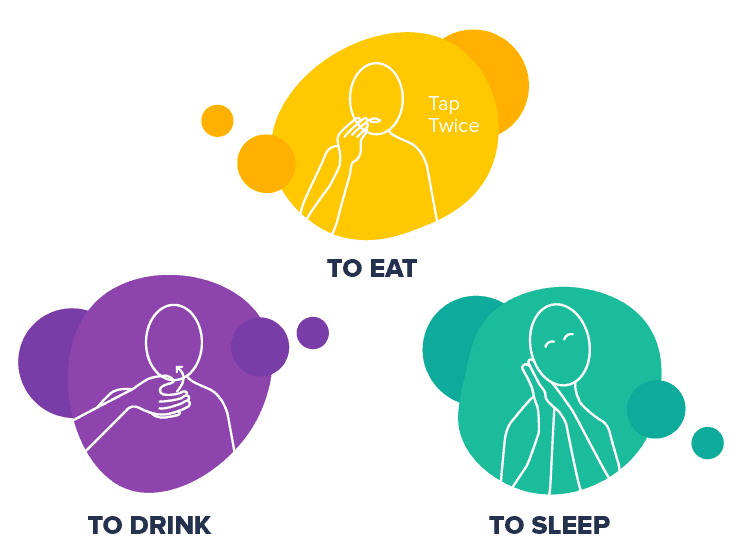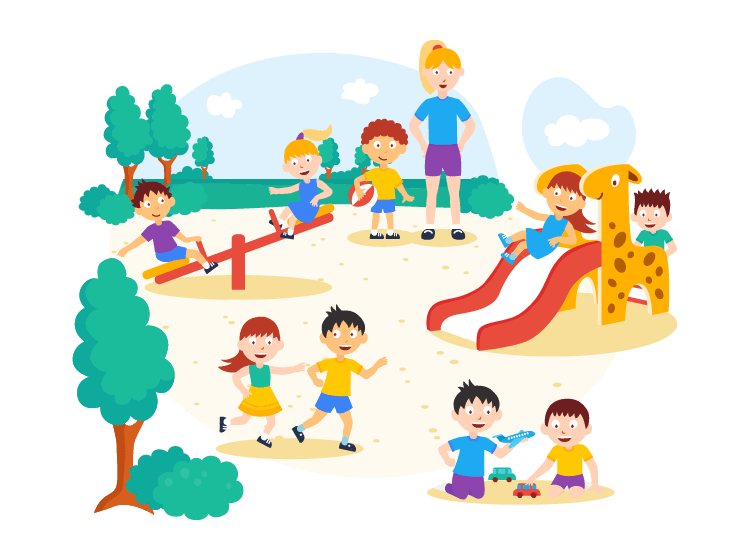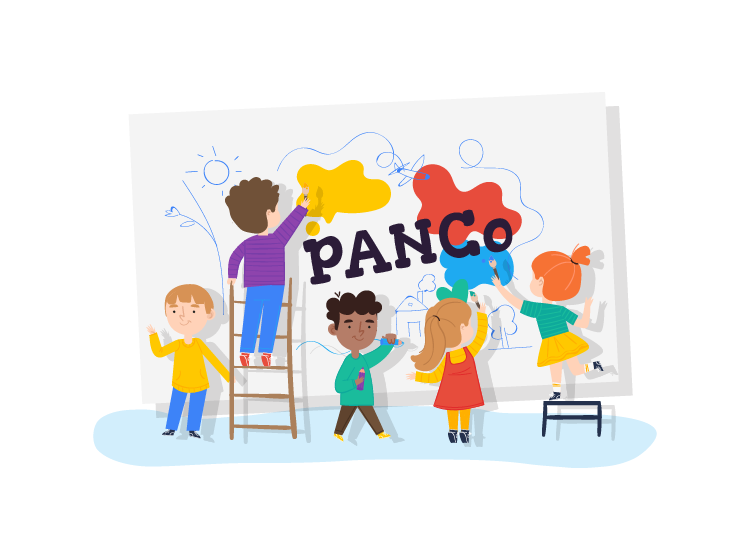What is Early Childhood Education?
Early Childhood Education commonly referred to as ECE, is education that starts from birth.
While most people think the first years of education occur during kindergarten, learning starts much earlier.
The learning that occurs during the first five years of a child’s life is actually the most critical as it shapes who they turn out to be in the future.
Why is Early Childhood Education Important?
The importance of Early Childhood Education is often overlooked and underestimated.
These are some reasons it is essential to grasp its importance and adopt it for your children and childcare center.
Behavioral Benefits
While academics are important, that isn’t the only positive thing that comes out of early childhood education.
Sending children to preschool or daycare at an early age has been linked to decreased crime rates, less drug and substance abuse, and fewer cases of mental illnesses.
Better Career Opportunities
Studies show that sending children to preschool or a daycare center and kick-starting their creativity and thinking at an early age has been linked to better job opportunities, strong emotional development, both in and out of the workplace, and an overall brighter and more promising future.
Progresses Learning
Physical, emotional, and social development all take place in a child’s first three years.
Therefore, placing them in a situation where they are exposed to their peers and the common events that take place throughout daily life can help them learn faster and retain knowledge better.
This way, when it comes time to deal with the real world at later stages in life, they are better prepared to face whatever may come their way.
Early Childhood Education also reduces delays in learning in students, compared to students that don’t receive it.
Students that are exposed to a learning environment at an early age may be less likely to show signs of learning difficulties, such as difficulty reading, speaking, or writing.
Better Communication
Daycare or preschool is a child’s first opportunity to interact with others, whether it’s a teacher or other children around their age.
Surrounding children with their peers and adults both helps them learn to differentiate right from wrong behavior, and teaches them how to interact with others, speak up, express themselves, and may potentially help build a stronger, more confident personality.
It balances work and plays
A child’s attention span might not be as advanced as their older peers so taking frequent breaks, or having nutritional snacks, naptimes, and playtimes all contribute to learning and their retention of knowledge.
At daycare, those are all included in the day-to-day schedule to both teach children and let their brains retain information.
What do children learn through Early Childhood Education?
Sure, the children may be young, but daycare isn’t all fun and games, contrary to popular belief. These are some of the few things taught through Early Childhood Education.
- The alphabet
- New words – perhaps even languages – that broaden their horizons and vocabulary
- Writing
- Manners
- The difference between socially acceptable and unacceptable behavior
- Getting familiar with school subjects at a beginner level, such as math and science
- Communication skills
As a parent, sending your child off into the real world might be scary, but the benefits of enrolling them in Early Childhood Education are plenty and will undoubtedly allow them to lead and enjoy a brighter future ahead.
5 Important Early Childhood Development Methods
1. The Pikler Approach

Emmi Pikler (1901 – 1984) is the mind behind the Pikler approach that helps our understanding of young children and how to respectfully care for their needs.
Her theory includes 7 Key Principles:
Key Principle 1 – Give babies your full attention
Many parents lead busy lives and parents are often multi-tasking, therefore we must give the babies in our care our full attention.
Key Principle 2 – Slow down
Give babies time within routines and activities instead of always rushing to complete and start the next task.
Key Principle 3 – Build a trusting relationship
Babies must develop a trusting relationship with the people who care for them.
Key Principle 4 – Carry out care routines with the child and not to the child
All care routines should be carried out with the child, speaking with the child, interacting, and supporting independence – care routines should not be something that you ‘just do’.
Key Principle 5 – Babies should not be put into a position which they cannot get into themselves
Babies should be allowed the freedom to move and not always put in chairs, seats, and carriers.
Key Principle 6 – Allow babies time for uninterrupted play
Give babies time and space to explore for themselves.
Key Principle 7 – Be respectful to babies’ cues
Although babies don’t use spoken language they do communicate with their carers. It is important for carers to respond to these cues and to show respect, so when a baby turns their head away because they don’t want any more food we should respect this.
2. Practical use of Makaton

When Malik was a baby I started to use Makaton to support his speech development.
I had seen how it worked with my nieces and nephews, who were raised in single language households, and I understood how helpful it could be for children who grow up bilingual or multi-lingual.
I used the signs together with the spoken words for the language we use daily.
Later I noticed that Malik never had problems expressing himself in any language he spoke. He was used to expressing himself with gestures whenever he needed to.
“Makaton is a language program using signs and symbols to help people to communicate. It is designed to support spoken language and the signs and symbols are used with speech, in spoken word order.” (makaton.org)
Makaton can be very helpful in the classroom when you want to give children the opportunity to communicate their needs and feelings to you even when they are not able to speak (English) yet.
Simple signs such as ‘to drink’ or ‘to eat’, ‘please’ and ‘thank you’ are very easy to teach to children, especially when you use the sign combined with the spoken word.
You also can make symbol cards to use in your classroom so children can point out what they mean.
“With Makaton, children and adults can communicate straight away using signs and symbols. Many people then drop the signs or symbols naturally at their own pace, as they develop speech.”
(makaton.org)
By using Makaton with children from a very young age (babies) they become able to communicate their needs when they are not yet able to speak.
This helps them to become less frustrated when they are in the process of developing their language because they still can share their needs and thoughts with you.
In this way, Makaton can be very helpful for children who can speak in their own language but are not able to speak the language of your setting yet.
You can share the signs you use regularly with parents and encourage them to use them at home in their own language, to make the child familiar with the signs which you use in class.
They will gradually start using the correct word in the correct language and drop the sign when they are ready.
For practical ideas on how to use Makaton please go to www.makaton.org
Or watch Youtube videos of Mr. Tumble.
3. Enabling Outdoor Environments

The outdoor environment allows children to explore and experience a wider range of play opportunities that cannot be accessed through the indoor learning environment alone.
The outdoor environment is a much more flexible space and can be adapted to allow for messier and more physical play opportunities.
Whilst outside children can also experience the sometimes unpredictable changes in weather that occur during the cooler months in the UAE and can feel the heat of the summer lessening, air and wind becoming cooler and on the few days that it does occur – rain!
The outdoor environment also allows children to engage with nature – investigating mud, digging holes, exploring plants and trees, various natural textures, and growing things.
Children spend a lot of time indoors and in constant air conditioning either at home, in their settings, or cars.
As an early years practitioner, you must consider the educational and play opportunities that you are providing for children when you take them outdoors, allowing them to explore and develop an understanding of the world around them.
4. Physical Activity and Nutrition Co-ordinator (PANCo)

Have you heard of PANCo?
PANCo stands for Physical Activity and Nutrition Coordinator. It is a new role that is being created within the Early Years Sector in response to the growing problem of childhood obesity and the increasingly sedentary lifestyles which children lead. It has been developed from a pilot project by the Cambridge Childhood Partnership.
The aim of creating the role of PANCo within a setting is:
- To put child wellbeing at the center of practice by developing this specialist role within every early year setting.
- To build practitioner skills and confidence to undertake this role by providing training support and continuous professional development.
- To support the well-being of children, families, and staff by developing a framework and knowledge base using current research and national guidelines.
In essence, the PANCo in a setting will be responsible for promoting and supporting physical activity and sound nutrition within the setting. They will implement change within the setting to ensure best practices in these areas and will support other practitioners and parents to make healthy choices with regard to nutrition and physical activity.
The new NCFE CACHE Level 4 Certificate for the Early Years Practitioner
has a unit devoted to the role of the PANCo. It will be possible to either do the entire Level 4 or attend specific units to achieve this Level 4 unit certification.
If you are interested in either the entire NCFE CACHE Level 4 Certificate for the Early Years Practitioner or in only the individual level 4 Unit certification for the PANCo unit contact admin@eyes-me.com for further detail.
Early childhood years are a crucial phase in the development of children into mature, responsible, and well-rounded individuals. We noticed the dire state of preschool and childcare management tools in 2014 and immediately set out to change that. By 2015, we had released Parent, an ultra-fast, super-easy, and delightfully feature-rich preschool management app. Parent™ brings efficiency and speed to your childcare management while saving you, the parents, and the children invaluable time.
Currently, Parent™ is a lead childcare management software. Our platform has been embraced by childcare providers across seven countries, supports multiple languages and curriculums. We are committed to creating positive partnerships between parents and their childcare center, allowing you, as educators, to spend more time nurturing each child in your care.
5. Digitalize Your Child’s Environment

Digitization is changing the world, BUT, it’s crucial to raise our children with the right technology and digital innovations.
It’s incredibly important that we use digital technology in the right way.
So we can simplify the lives of students, parents, and teachers, AND save the environment by minimizing paper wastage!
By digitalizing your Kindergarten environment, you can strengthen the two things that matter most – early childhood education and the only planet we have to call home.
Parents and teachers worldwide are searching for the right digital platforms that will not only simplify and streamline life and admin but also help children embrace technology and digitalization in a positive light.
After all, the way we choose to raise our children has a massive impact on the rest of their lives – and the future of our world! It’s crucial that their early years of education matter for the long haul.
The right childcare management systems help educators enhance early childhood education by using intuitive digital technology, helping kids, teachers, and parents use digital technology in the right way.
With the right app, you can streamline mundane daily tasks WHILE saving paper. #winning!
You see, instead of printing report after report, sick notes, and everything in-between, you can(finally) do everything digitally – saving the environment and your sanity.
By using the right digital platform, and less paper, you’ll also save a ton of money.
You could use that to embark on a much-needed getaway to Hawaii or to further your Kindergarten’s technology.
With more money, the possibilities are truly endless!
Without the need to print, you can do everything digitally, like reporting meals, naps, and sick days, communicating with parents, creating calendars, and child/staff profiles – the list goes on and on.
Oh, and it’s a no-brainer that you’ll also be a role model for the toddlers at your nursery.
They’ll look up to you and how you use digital technology to make the world a better place.
They too will grow up with your values and virtues, so you can give yourself a pat on the back.
You’ll get to watch as your paperwork diminishes, your mind clears, and you can finally breathe easier.
The right digital platform will put your mind at ease, so you can focus on raising inspired, confident leaders of tomorrow, today.
Parent™ is a great example of an app that allows you to use digital technology in the right way, raising enthusiastic future leaders while making a difference in the environment.
Parent™ is a world-class Kindergarten management system, designed exclusively for busy childcare professionals and specialists in early childhood education.
Parent™ works (and looks) like a dream, fusing cutting-edge software with ease of uploading, efficient communication systems, an intuitive design, and so much more. Honestly, we could talk about Parent™ all day – but the only way to experience the difference is to try it out for yourself.
You’ll never know unless you give it a go – so go ahead!